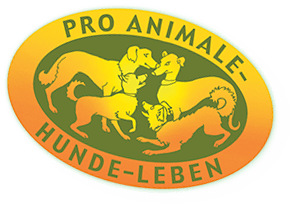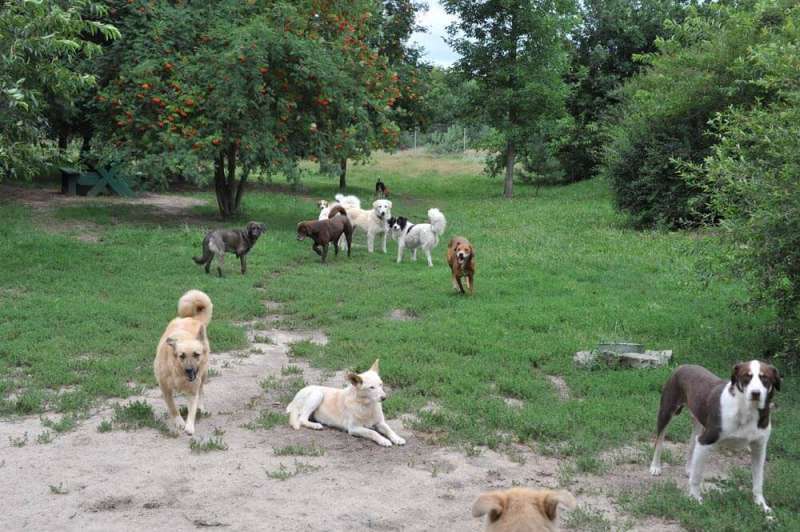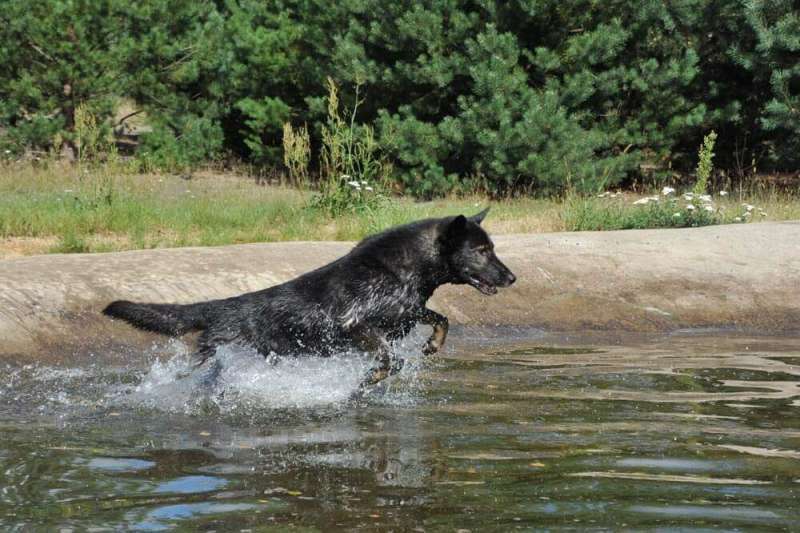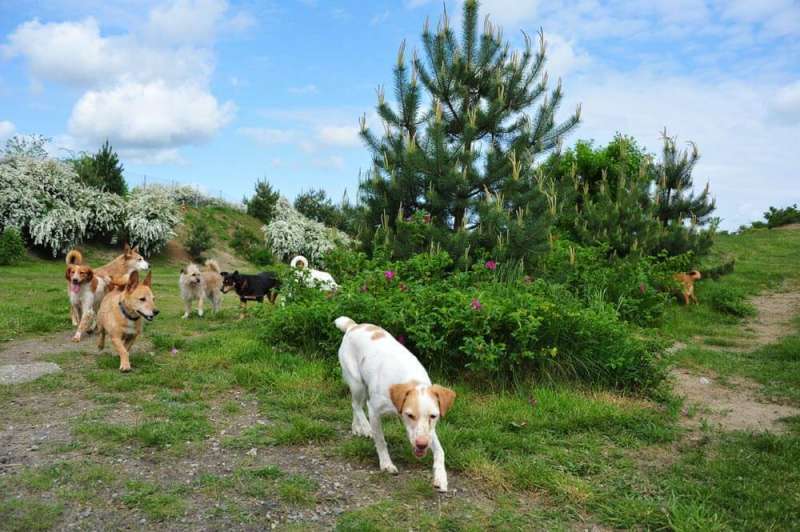The Pro Animale dog life
A word now about the true nature of dogs …

I. The "insatiable" desire of dogs to be close to us…
We humans have made dogs increasingly dependent on our needs and expectations – whether as guard dogs, breeding dogs, sniffer dogs, hunting dogs, laboratory animals or "fighting dogs". In short, we have turned them into objects to satisfy our desires or to be marketed. We have moulded these animals in such calculating and manipulative ways that most dogs today are no longer able to exist without a fatal dependence on us humans.
After protecting animals for over 30 years, we have witnessed all the ways imaginable in which animals can be reduced to servitude and we have provided shelter for thousands of former "animal slaves".
In doing so, we have often been struck by a strange phenomenon: "How is it that all the humiliations we humans have imposed for thousands of years on these creatures we call "dogs" have hardly damaged the purity and goodness of their souls? "We" have indeed been able to inflict every imaginable torment on their souls, but until their dying breath they seem unable to lose faith in us human beings. As we have been fortunate enough to witness thousands of times, they are always ready to leave behind their old lives and start "anew" with "you" or "me".
In this context, I remember a Spanish galga (a female greyhound), who had already been exposed to a slow, agonizing death by hanging with a rope around her neck … and who was saved at the last moment … She had lost her voice through this attempt to strangle her, but the look in her eyes with which she greeted her saviour was devoid of any hatred and full of longing for love …
So I ask you, Dear Reader, how can we explain such behaviour…? We cannot explain it – only accept it gratefully in the knowledge that this longing for closeness to humans is apparently buried deep within each dog's psyche. And we must, of course, respect this longing when planning our dog refuges. The daily routine should be designed so that humans and animals are together as much as possible.
II. Natural characteristics, behaviour and social needs of the "dog" species.
Dogs are social animals that have evolved to move around and explore in the company other dogs…
Of course, this fact is well-known and has been confirmed by countless behavioural studies worldwide. We have made great efforts to design our refuges accordingly. Dogs naturally like to be in the company of their peers – and at the same time they need physical activity to stay healthy …
To suppress or reduce a dog's mobility or its ability to interact socially is an act of cruelty. It is also a way of making sure that the inmates of an animal shelter become physically and mentally ill.
Unfortunately, in conventional animal shelters it is all too common to see dogs confined in single or double compartment kennels. These dogs either jump up aggressively at the bars of their cages or retreat into apathy, depression and isolation, the victims of severe psychological disturbances.
In contrast, Pro Animale's refuges endeavour to accommodate the dog's need for closeness to human beings and its species-specific characteristics described above.
We try to recreate to the best of our ability what we call an "appropriate habitat" in all our animal refuges, taking into account local conditions.
Of course, the term "appropriate habitat" can mean quite different facilities for the other types of animals in our care. All refuges should be built and run to satisfy the natural needs of a particular species, In this case we are talking about dogs.
As we said before, dogs are primarily social animals and the only humane way to keep them in refuges, whether indoors or outdoors, is in groups.
(a) Pro Animale attaches great importance to dogs' social well-being and dogs are housed together in all our refuges. We also encourage them to exercise by providing large outdoor enclosures where they can roam and run free.
In this way we are able to provide an "appropriate living space" and a daily routine in which our protégés can thrive in the company of their peers and us humans.
This form of group housing requires round-the-clock care from empathetic caregivers. Looking after a group of dogs on a daily basis requires great personal commitment as well as a thorough understanding of these animals. Besides cleaning, which takes up a lot of their time, they need sensitivity and know-how to put together individual groups of dogs and integrate new members. Carers working in conventional kennels are simply not able to develop these skills.
b) Group housing does not mean living in packs
Group housing should not be confused with dogs living in packs. A dog refuge must be run by humans, not by the animals themselves. Therefore, we make sure that no four-legged pack leaders are allowed to dominate other pack members. Instead, we must be the "pack leaders" ourselves, looking after our protégés, taking care of their well-being, getting to know the personality and peculiarities of each individual dog, and controlling and smoothing out problem situations that occur naturally in every group.
c) Group housing needs a fixed schedule
Another essential feature of group housing is that the dogs must follow a daily routine. Every dog quickly grasps when it is time to get up in the morning and romp around, when and where to feed, or when it is time to rest or doze. They know when there is something new to experience, like a stream of interested visitors, and when it is time to hit the sack in the evening. One thing is certain: without a fixed schedule group housing does not work!
One more thing needs mentioning. Behavioural research has shown that a dog naturally spends between 16 and 18 hours a day either sleeping or dozing. This can be confirmed by anyone who keeps dogs at home!
Of course the exact time varies slightly from breed to breed, but if we assume that the average dog spends around 17 hours a day sleeping and resting, this leaves seven hours throughout the day in which it needs to satisfy its urge to move about. It is very important that individual groups of dogs do not spend too much time in the same outdoor environment. Even a 1,000 square metre enclosure becomes boring at some point if it is visited every day.
By moving groups from one enclosure to another, the dogs always have a new incentive to explore – for example, picking up the scent of those dogs that have previously visited the enclosure.

















